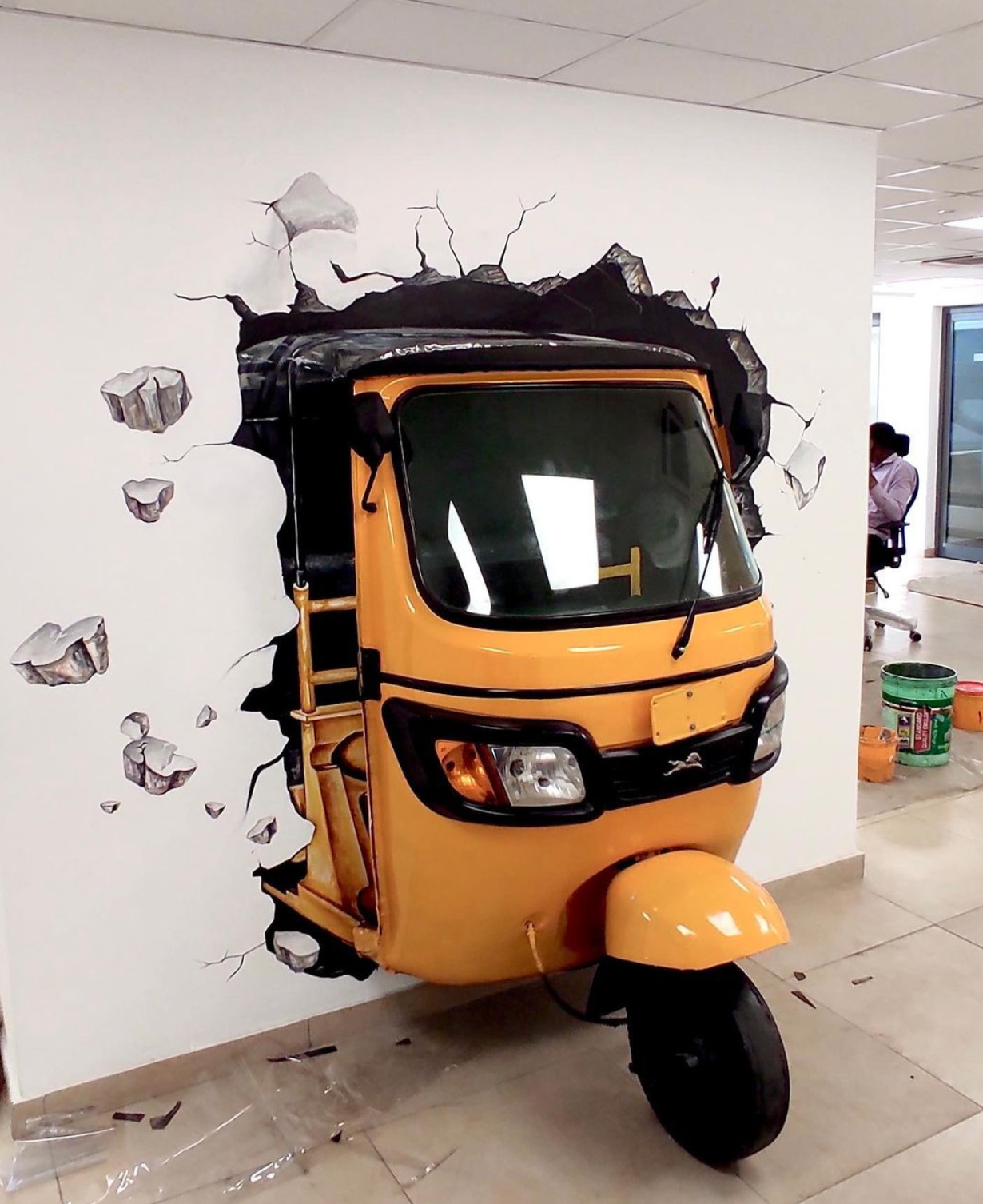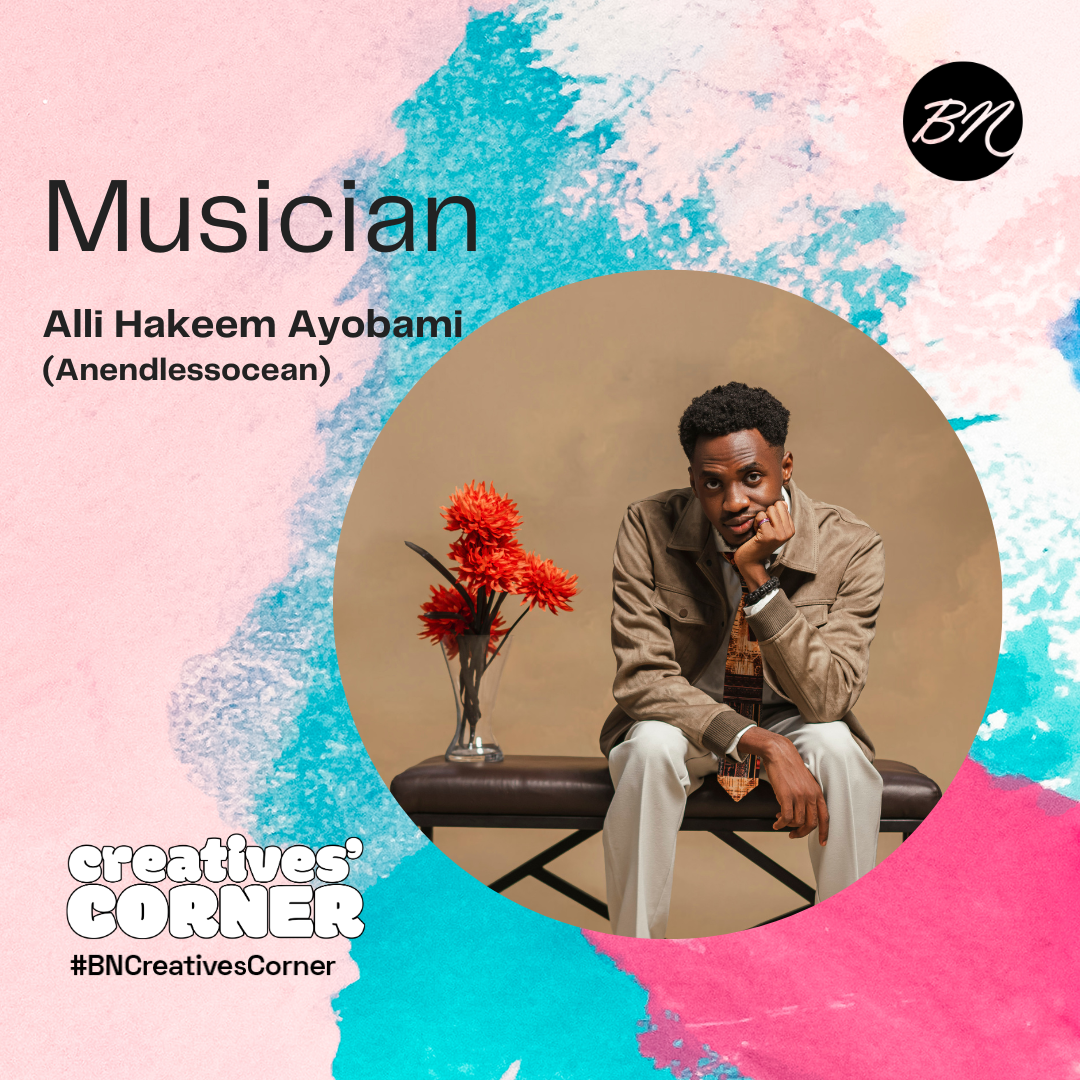Features
#BNCreativesCorner: Brushes and Colours – How Cera Cerni Paints Life Into Walls
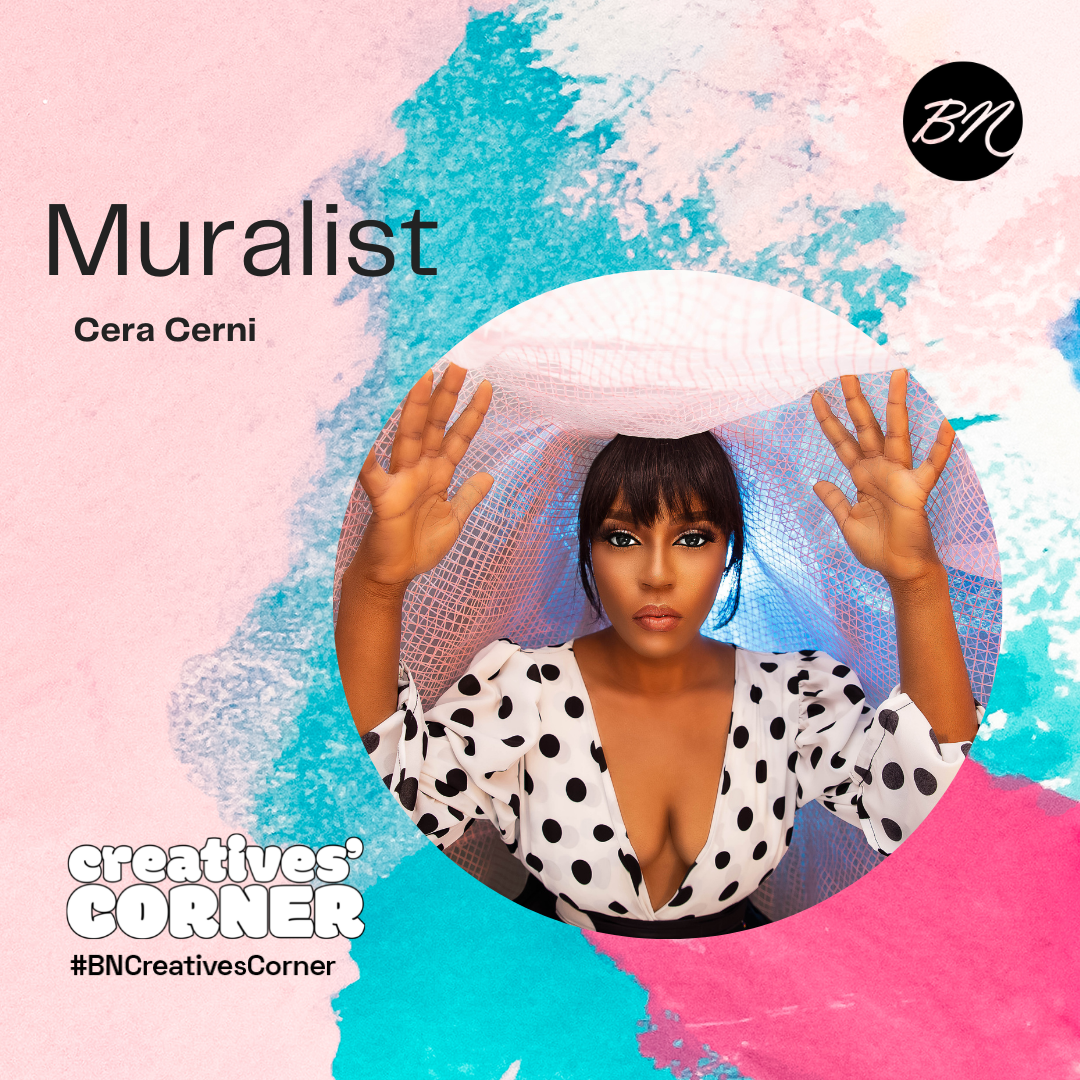
As a little kid, Cera Cerni‘s parents bought her lots of storybooks. But flipping through the pages, little Sarah (Cera) did not find the words as captivating as the faces staring back at her. Colours, shapes, lines, cartoons – what’s there for her not to love? It didn’t take long before Cera started using her storybook for another purpose: drawing.
“I started drawing from when I was age 7, that time, it wasn’t because I had a plan to become an artist; I was just doing it because I was a child enjoying drawing and luckily for me, my parents were quite encouraging. So when I draw, I’ll show them, they’ll encourage me and give me a pat on the back. They bought storybooks for me to read but what I was doing was recreating the cartoons in the books. I’d read them but I was more interested in drawing the pictures.”
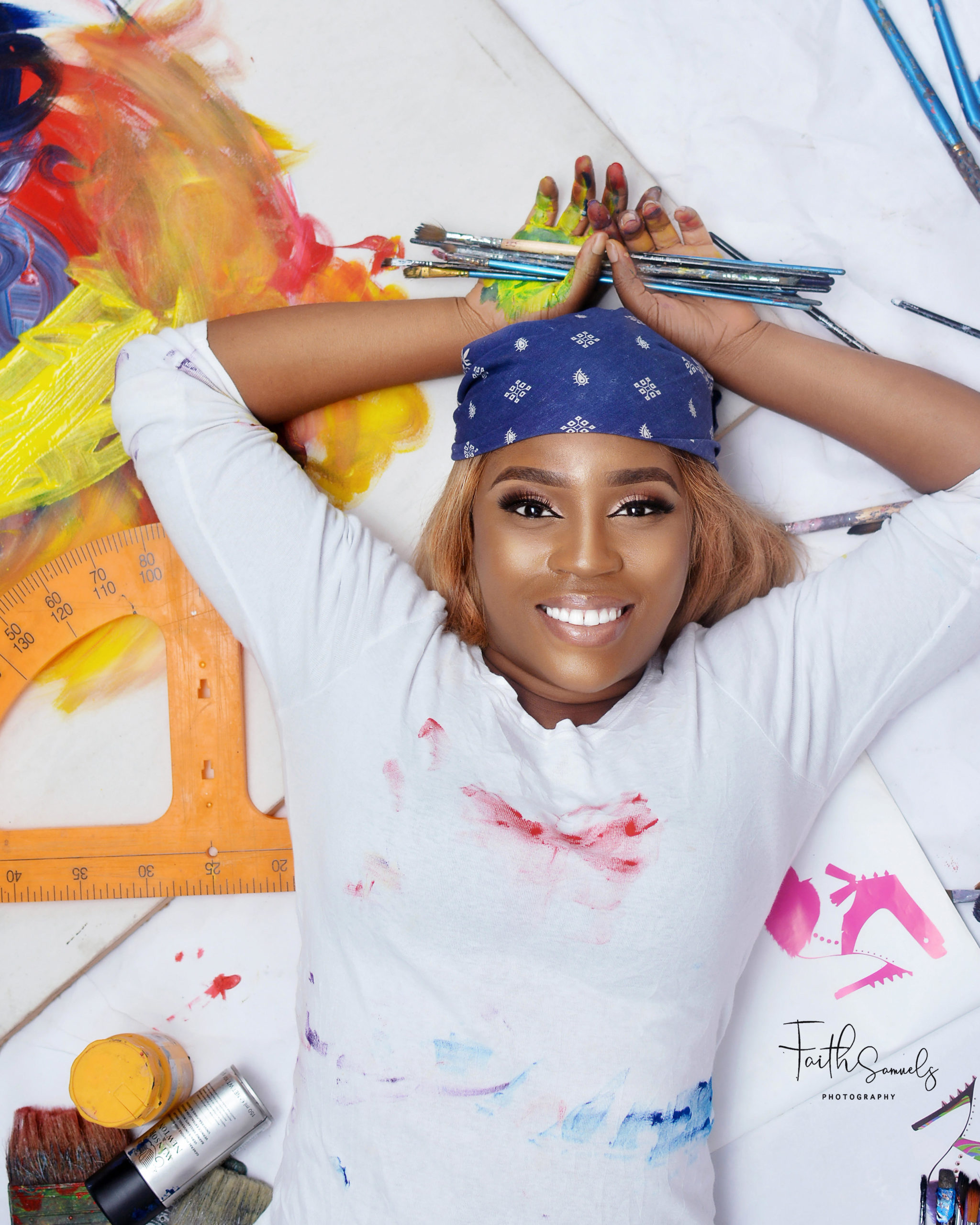
Cera Cerni is one of Nigeria’s finest muralists. Drawing, for her, has been long coming and she’d always known she’d do this for a really really long time. Until…
When it was time to go to the university, I got counsel from people to study computer science because the world is going global and technological. Well, I thought it wouldn’t affect my drawing so I went for it.
And then I started working as a programmer. For three years, I was programming, but I hated my job. I didn’t like any part of programming; it was just bad for me. I was unhappy and depressed, so I resigned because I wasn’t very productive at work anymore.
I was sitting at home thinking of the next job to apply to that would not make me sad, but I didn’t get a job. I was beginning to question why I resigned in the first place – the job wasn’t coming, I didn’t have any savings. I left my job without money, so I was getting broke, sad, depressed and even more depressed.
In 2014, Cera Cerni decided she’s had enough. She had left her job in search of better things and now she was being constantly hit by sapa. She was tired of life, and it was time to end it all.
I became suicidal.
My family was in Lagos then, and I was staying alone – with a flatmate. I constantly had voices that called me useless, voices saying “You’re not useful to anybody, why are you even here? Why are you on earth? You don’t have a purpose. Why don’t you just end it?
I was thinking of how I would end it. I mean, what was I going to say to people? Why did I even kill myself in the first place? How do I go about this? Do I write a letter or what? It was in the process my mind told me to write the suicide note on the wall. I had maybe about two thousand hours left on me – my last cash. So I bought the paint: black. As I was about to write the note, I thought “let me quickly draw something. Let me play around with this space”.
I did a drawing on the wall and it was so dark. A really dark painting. I drew three women – they were supposed to look like women but they looked like witches. And when I finished, I designed it, made it look good. When my flatmate came home and saw it, she went “oh my God, you can draw and you didn’t tell us.” She then asked me to paint her room too – something bright, floral or girly. She paid for the material and when she went to work the next day, that kept me busy for the entire day.
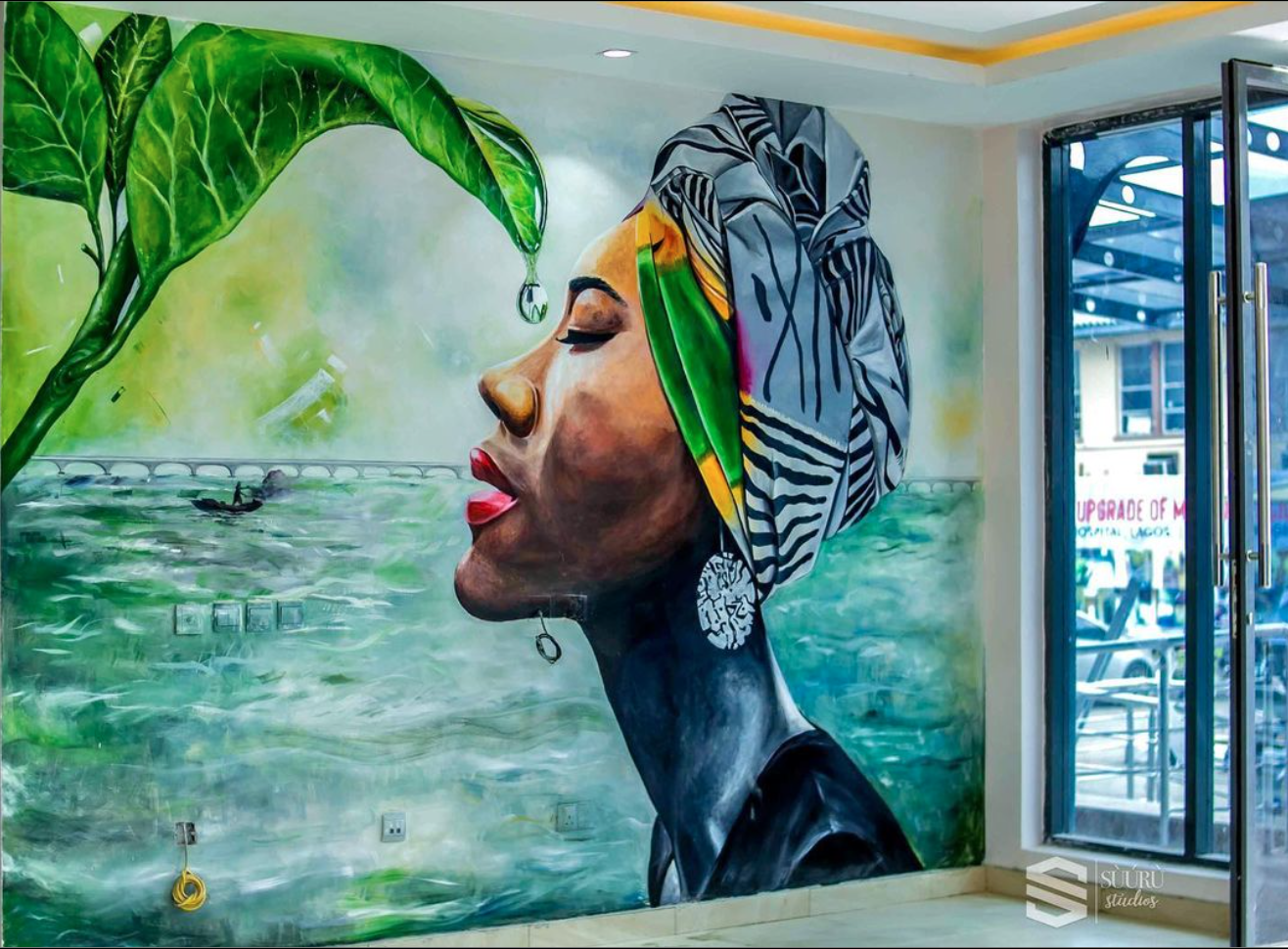
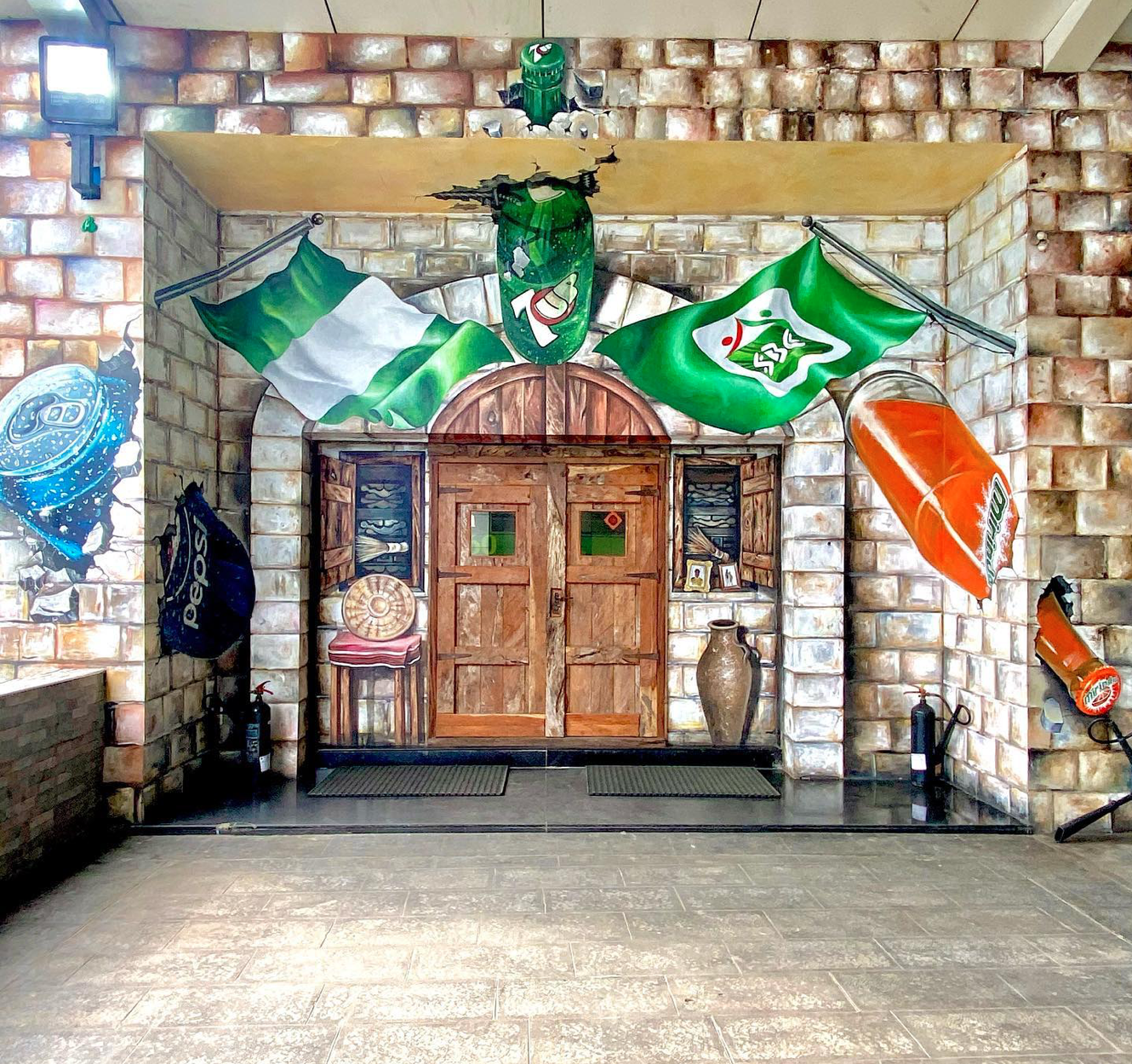
Cera Cerni and I laughed over the idea of drawing before dying. But suicide isn’t a joke, and with hundreds of people committing suicide in Nigeria, it is surreal how paints and colours saved Cera.
While painting, I didn’t think of killing myself. I didn’t remember I was depressed. I wasn’t sad. I just felt joy and was so happy to do the painting. I was so lost in the process of creating the patterns and putting them on the wall.
Painting her flatmate’s room was the beginning of Cera’s mural journey.
When she got back, she loved the work. She took a picture of it and she posted it on her BBN. Her friends and colleagues saw it and people started calling me for jobs. At first, I charged 20k – it wasn’t about the money, I just felt so happy. Every time I was on the wall, I easily forgot all my problems. I knew this is it: the point.
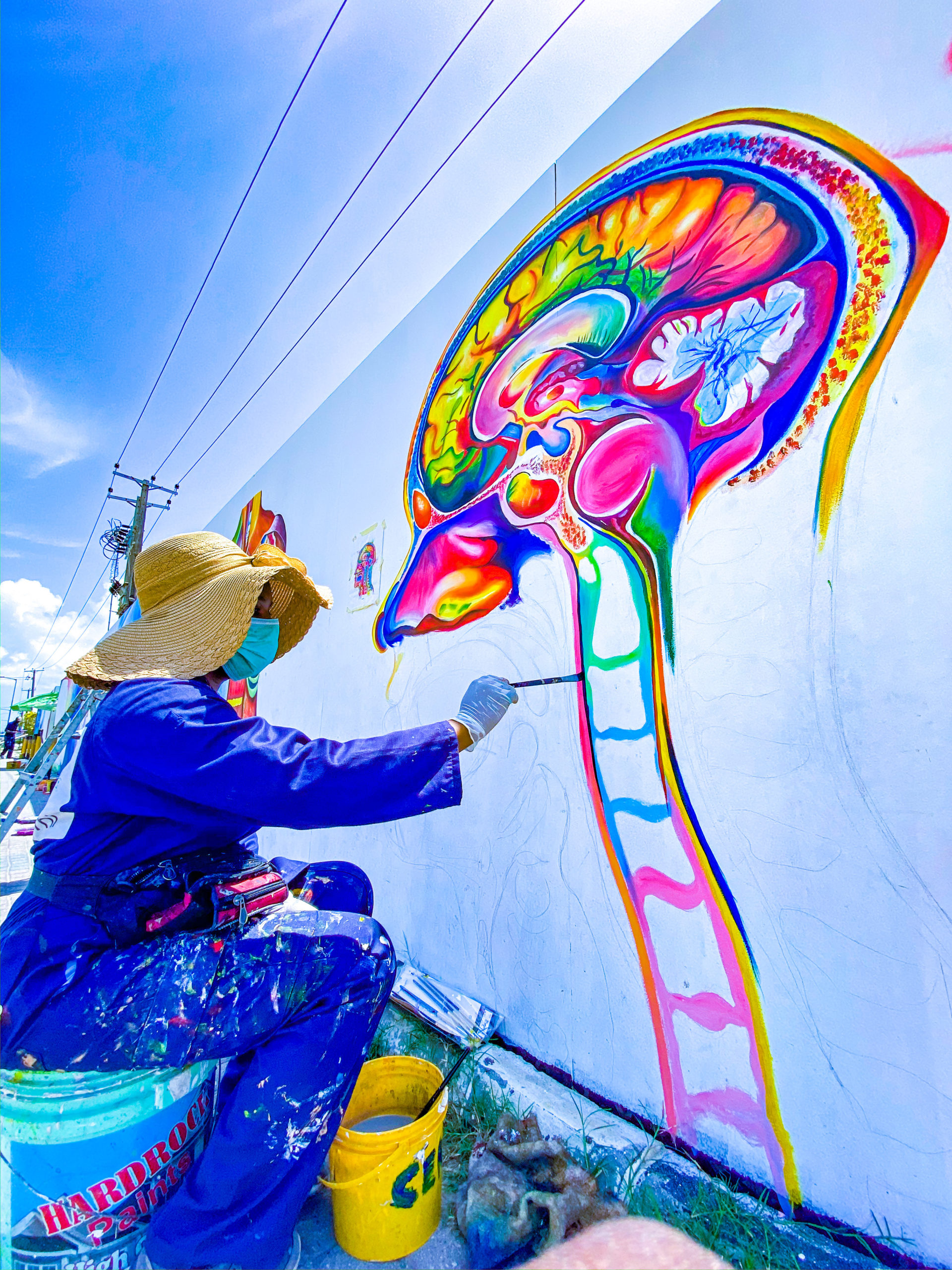
Phew. A journey.
I printed out some of my works, and went from one school to the other trying to market myself. They’ll turn me down, saying they don’t need artwork: Artworks are demonic; we don’t draw cartoons in our school, children shouldn’t draw Ben 10; Ben 10 changed colours hundred times in the cartoon, we don’t want all that. I printed proposals with my last cash and they’ll trash it. When I go back to do analysis, to know whether or not I’ll work with them, I’ll see my proposal in the trash can.
Proposals in trash cans wasn’t Cera’s only problem. There were more hurdles she had to cross to swipe brushes across walls.
I’m a woman and when you go meet people, trying to market yourself to them, you have to work twice as hard to prove that you can actually do this work. It’s a male dominated field; as at 8 years ago, people had not really seen women climb the ladder to paint walls, so I had to convince people to give me a chance.
I was also getting sexual advances from men who wanted me to date them before giving me jobs, and promising to push my brand higher if I agreed to be with them. Those kinds of proposals were coming up, and I didn’t find them funny. I just want to work, leave me alone, you know? It was difficult to handle them – I constantly had to ask myself if I was being too nice or too friendly. Was I too open to them? Was I not professional enough? What was I doing giving them right? So what was that? What was I doing, though? Was I looking for validation or was it so much? What was I doing? I didn’t want to stop my work because of that, but I also needed to set a boundary. I didn’t appreciate someone trying to touch me just because I’m here to present my work to you, you know?

If you are wondering if Cera found a solution to these sexual advances, she did. “I kept going back to the groups I belonged to ask how to sort out the issue.”
Another challenge was finding the right material. I didn’t actually go to an art school to learn. I didn’t know anything, so finding the right kind of materials to use was a bit of a struggle. I kept changing materials, I kept changing markets, I kept changing sellers. For instance, I get deluxe in Lekki and I just go to their office to get it, but it became too expensive compared to what I was charging for my service. So I had to find another seller in the open market, where I will get cheaper products. But what happened? It was my first time going to Oshodi, going towards Mushin. I got lost a couple of times. I got lost like two or three times in Mushin markets. It was very challenging for me. I will just be in the middle of the road and I’m crying, like, what am I doing here?
Then there were those who refused to pay her after working. “Some people are just built like that. You finish your project, but they don’t want to balance you.” See, being a creative in Nigeria is hard. Heck! Living in Nigeria can sometimes be hard. Ask those who have been spending 6 hours from Ajah to VGC, and those who are trekking because – fuel scarcity. Still, Cera wasn’t fazed. This love between her and murals is through thick and thin.
It took Cera 3-4 years to gain ground, but she can boldly say that becoming a muralist is one of the best decisions she has made. “Being an artist in Nigeria has paid off for me,” she says. Of course, we agree – the newly launched Cera Cerni Art Hub is proof. The art hub is also a way of pouring into new artists springing up in the creative field daily.
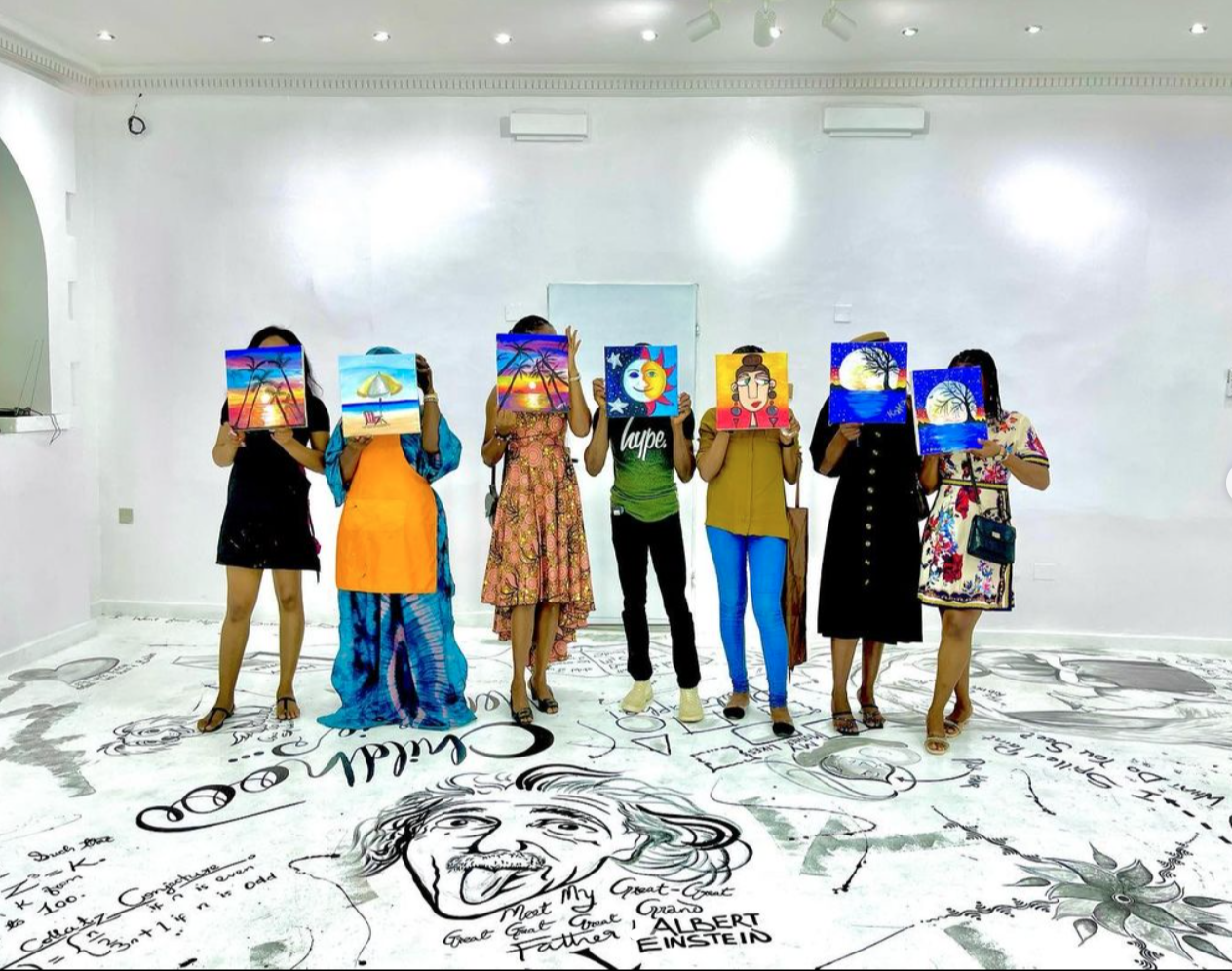
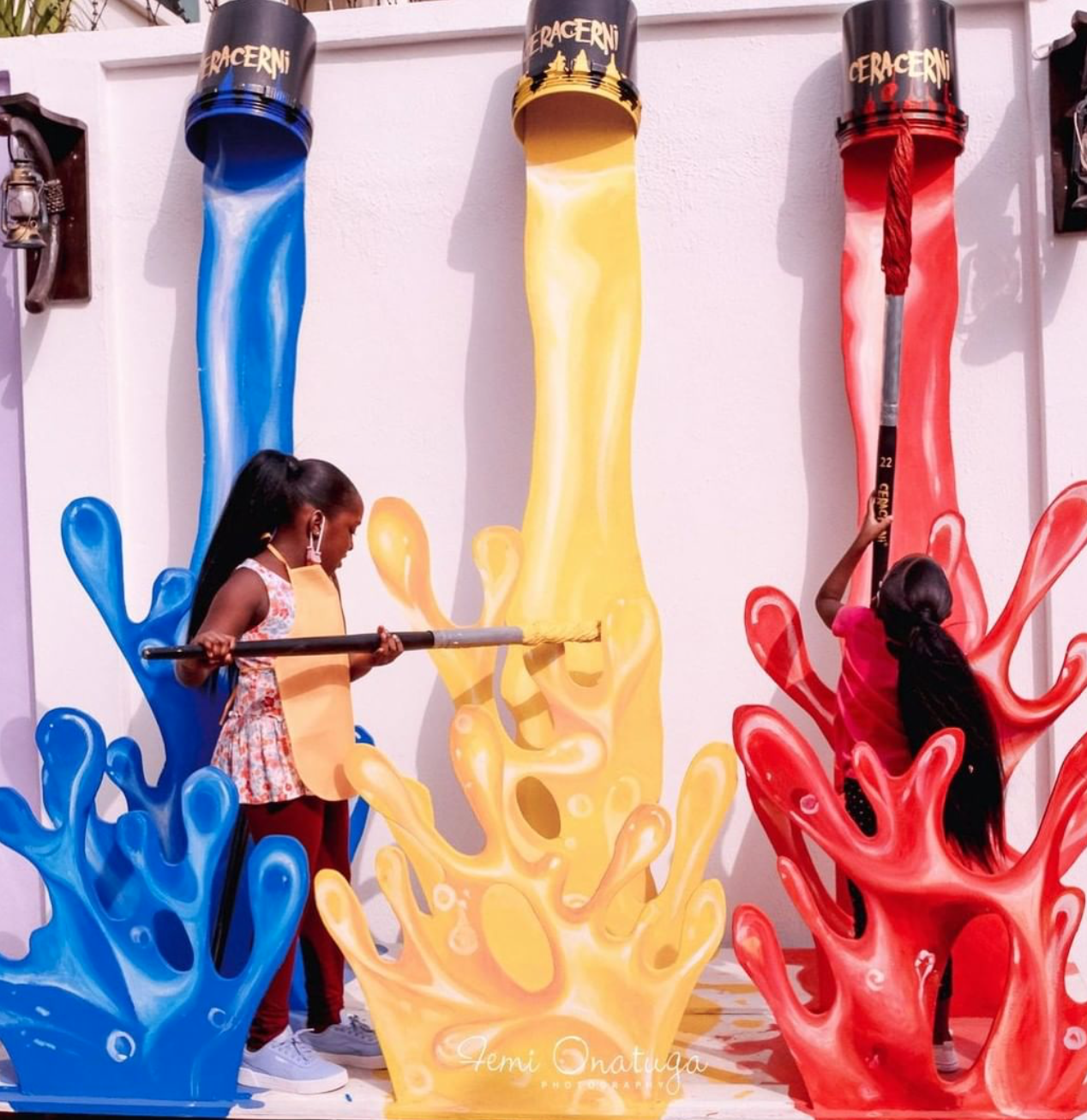
I set up a space and made it subsidised for other artists to have space to showcase themselves. In this art hub, we have a school. It is like a skill acquisition centre where you can learn art without going to the university or writing JAMB.
One fun fact you need to know is that the floor of the gallery is filled with paintings of Cera Cerni’s childhood. Another fun fact is that you can also pop into the art hub to sip and paint.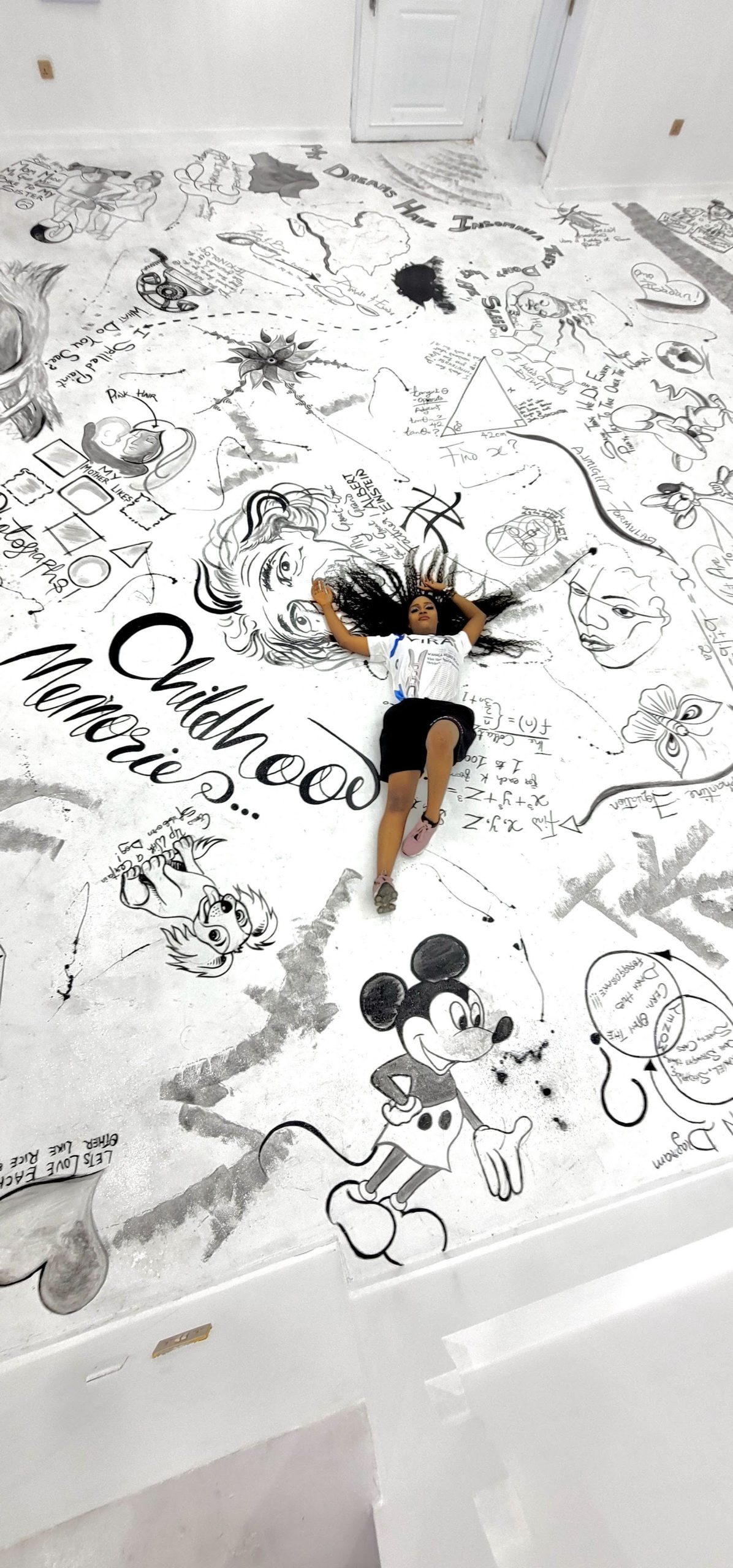
Cera Cerni’s journey in the world of murals has been a very fulfilling one, surely, she’s in the best position to give young creatives advice on how young creatives can find their place in the creative industry.
In a fast growing place like Lagos where certain fields become easily saturated. Try to find your own style, you can have mentors, but it is super important to have your own style. be consistent. Find what works for you and stick to it.
From exhibitions to international collaborations, and so more, Cera Cerni has many future plans and projects cooking, but here’s one we must share: she wants to make her future murals unbelievably realistic.
You go, girl!
_
Photos are gotten from Cera Cerni’s Instragram page.
***
BN Creatives’ Corner is a series that gives creatives living and working in Africa the platform to showcase their work, talk about their journey, struggles and highlights of being creatives in Africa. We have told the story of Anne Adams who bends clay to create stunning artwork, and Nana Frimpong Oduro whose art explores the many aspects of our split personalities, TJ Benson a writer, Renike, a visual artist, and many more. You can read them all here.
Many thanks to Cera Cerni for having this conversation with us and letting us share her story. You can visit her instagram pages- ceracerni, and Cera Cerni’s Art Hub – to see more of her works.

